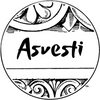Paint for Wall Cement: Exploring Limewash and White Cement
When it comes to choosing the right paint for your walls, you'll discover a plethora of options. However, two unique contenders that are gaining popularity for their distinctive characteristics are limewash and white cement paint.

Pastel Wall Paint: A Splash of Subtle Elegance
Pastel wall paint is the embodiment of understated elegance. These gentle, muted colors create a soothing and welcoming atmosphere in any space. They are often chosen for their ability to make rooms feel more spacious, airy, and cozy. However, when it comes to using pastel wall paint, a few considerations are important:
- Light and Bright: Pastel colors are inherently light and bright, making them an excellent choice for rooms with limited natural light. They can help reflect and amplify available light, making the room appear larger and more inviting.
- Versatile Palettes: Pastel wall paints come in a wide range of shades, from soft pinks and blues to gentle greens and yellows. This versatility allows you to create a unique and personalized ambience in your living space.
- Balance with Decor: When using pastel wall paint, it's crucial to strike a balance with your decor. Complement these soft shades with furniture and accessories that don't overwhelm the space, maintaining a sense of harmony and serenity.
DIY Limewash: An Age-Old Finish with Modern Appeal
For those who seek a more natural and rustic look, DIY limewash is an excellent choice. Limewash is a centuries-old technique that involves applying a slaked lime and water mixture to create a chalky, matte finish. It's prized for its ability to create a breathable and weathered appearance on walls. Here are some key points to consider when using DIY limewash:
- Textured and Timeless: Limewash imparts a textured, aged appearance to walls. It adds depth and character, making it perfect for spaces where you want a timeless, rustic charm.
- Breathable and Eco-Friendly: Limewash is a breathable finish, which means it allows moisture to escape from the walls. This characteristic is especially valuable for older homes with porous walls, preventing issues like peeling paint or mold growth. Aside from that, limewash is environmentally friendly and contains no harmful chemicals.
- Versatile Application: DIY limewash can be applied to different surfaces, including plaster, cement, and brick. It's a versatile option for both interior and exterior walls, adding a unique finish to any space.
Comparing the Two: Pastel Paint vs. DIY Limewash

When deciding between pastel wall paint and DIY limewash, consider the following factors:
- Aesthetic Appeal: Pastel wall paint offers a clean, contemporary look, while DIY limewash imparts a more rustic, weathered charm. Your choice should align with your desired aesthetic for the space.
- Durability: Limewash is known for its longevity and breathability, making it a suitable choice for older homes. Pastel wall paint may require more maintenance and may not be as suitable for high-moisture areas.
- Application and DIY: Applying pastel wall paint is straightforward, typically requiring fewer steps. DIY limewash, while achievable for beginners, may require a bit more attention to detail and effort in mixing and application.
- Cost: In terms of cost, pastel wall paint is generally more budget-friendly. DIY limewash can be cost-effective if you're willing to invest some effort in the process.
In the end, your choice between pastel wall paint and DIY limewash depends on your aesthetic preferences, the specific requirements of your space, and your willingness to invest time and effort into the application. Both options offer unique and charming finishes that can transform your walls into works of art. So, whether you opt for the soft allure of pastel wall paint or the timeless elegance of DIY limewash, your walls are sure to make a statement in your home.
